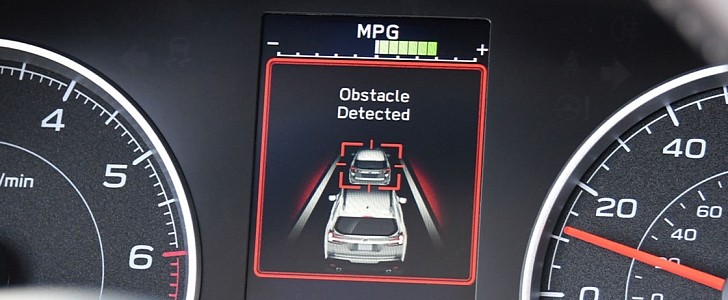Active safety systems help reduce the crash rates in today’s vehicles and are paramount to achieving the best crashworthiness ratings. The Automatic Emergency Braking systems are already slashing the crash rates by as much as half for vehicles equipped with them, says the IIHS. Now it’s time to raise the bar with higher-speed tests for the AEB systems, to better mirror the real-world scenarios.
The Insurance Institute for Highway Safety (IIHS) together with the National Transportation Safety Board (NTSB) has promoted using AEB systems on all the light vehicles sold in the U.S. The carmakers obliged, with 12 out of 20 major automobile manufacturers equipping nearly all the light vehicles they produce for the U.S. market with AEB last year, well ahead of the September 2022 target.
The current IIHS tests for the AEB systems were designed to stimulate adoption, but they only represent a slim fraction of the rear-end crashes AEB is designed to mitigate. While the IIHS tests are conducted at a maximum of 25 mph (40 kph), this is considerably less than the speeds of real-world crashes. To be sure, the AEB systems work at higher speeds too, but the IIHS has no way of telling how well they work. This is about to change though, as the IIHS prepares significant changes to the way they assess safety.
Currently, about 85% of the 2022 model year vehicles IIHS has evaluated so far earn a superior rating, which makes differentiating them a lot harder. Starting next year, the IIHS will drop the vehicle-to-vehicle front crash prevention from the award criteria but considers a new approach by raising the speed at which they test new vehicles and also introducing new criteria.
According to a new study by the IIHS, only 3 percent of police-reported rear-end crashes happen at speeds below 25 mph. Increasing the speed of the IIHS tests to 35-45 mph (56-72 kph) would make it relevant to more than 10 times as many police-reported rear-end crashes. Expanding the criteria to take into account the system’s ability to mitigate crashes with motorcycles and large trucks would also increase the evaluation’s relevance.
The current IIHS tests for the AEB systems were designed to stimulate adoption, but they only represent a slim fraction of the rear-end crashes AEB is designed to mitigate. While the IIHS tests are conducted at a maximum of 25 mph (40 kph), this is considerably less than the speeds of real-world crashes. To be sure, the AEB systems work at higher speeds too, but the IIHS has no way of telling how well they work. This is about to change though, as the IIHS prepares significant changes to the way they assess safety.
Currently, about 85% of the 2022 model year vehicles IIHS has evaluated so far earn a superior rating, which makes differentiating them a lot harder. Starting next year, the IIHS will drop the vehicle-to-vehicle front crash prevention from the award criteria but considers a new approach by raising the speed at which they test new vehicles and also introducing new criteria.
According to a new study by the IIHS, only 3 percent of police-reported rear-end crashes happen at speeds below 25 mph. Increasing the speed of the IIHS tests to 35-45 mph (56-72 kph) would make it relevant to more than 10 times as many police-reported rear-end crashes. Expanding the criteria to take into account the system’s ability to mitigate crashes with motorcycles and large trucks would also increase the evaluation’s relevance.






